Hydrangeas are one of the most recognizable summer flowering plants on Long Island. They are known, grown and loved worldwide and continue to gain popularity every year. While one species may be more popular than another, they all bring ornamental value to the garden for months of enjoyment each growing season. From groundcovers and vines to large shrubs or small trees, there is definitely a hydrangea for every garden.
Here on Long Island the most common species are:
- Climbing – H. anomala subsp. petiolaris
- Smooth – H. arborescens
- Big Leaf – H. macrophylla
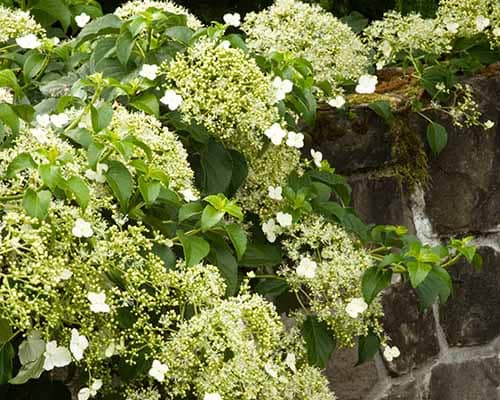
Climbing Hydrangea
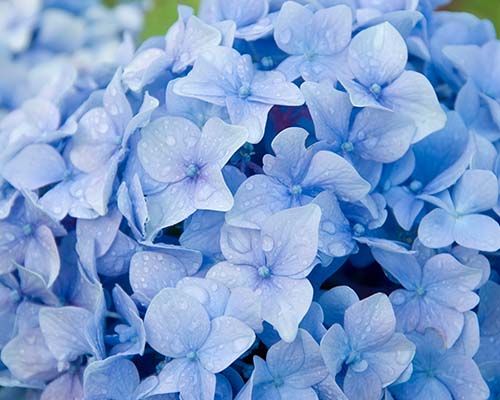
Big Leaf Endless Summer Hydrangea
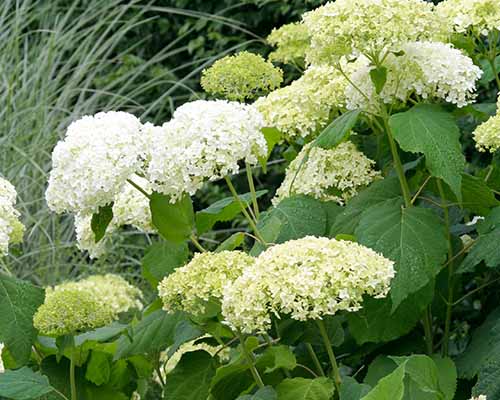
Smooth Annabelle Hydrangea
Climbing Hydrangea is a vine or groundcover that can grow upwards of 40’ (provided it has something to climb on). The creamy white lace-cap flowers occur in late spring/early summer. Moist, well-drained, organic rich soil is best. This beautiful vining shrub will grow well from full sun to deep shade, but will do best in a bright, filtered light, that is protected from the hot afternoon sun.
Smooth Hydrangea is a mounding shrub growing 3-5’ tall and wide. The abundant summer flowers are borne from the current season’s growth, and are available in creamy white or light pink. Moist, well-drained, organic rich soil is best. Best grown in partial shade, but is considered the most shade tolerant varieties available. Specifically avoid direct, hot afternoon sun.
Big Leaf Hydrangea is uniquely considered the most popular varieties on the market. With many cultivars (hundreds) available ranging in size of 2’ to 6’+. Flowers can be mop head or lace cap and the colors range from white to pink, purple, and blue and are the result of soil chemistry paired with the particular cultivar. Filtered light is best and a moist, well-drained, organic soil will produce the best results.
Other Popular Varieties Include:
- Panicle – H. paniculata
- Oakleaf – H. quercifolia
- Mountain – H. serrate
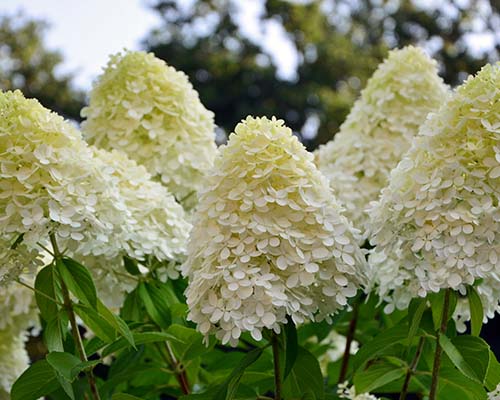
Panicle Hydrangea

Oakleaf Hydrangea
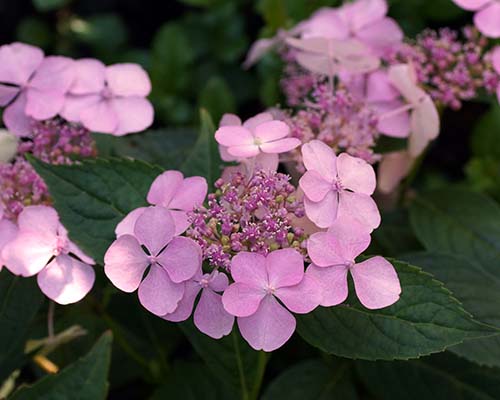
Mountain Hydrangea
Panicle Hydrangea is likewise comprised of many cultivars ranging in size from 3’ to 12’. This large shrub also makes a great candidate as a small tree with some formative pruning. The mostly creamy white flowers peak later in summer and most varieties fade russet pink before completely drying. This species can handle full sun to part shade, and will also perform best in a moist, well-drained, organic rich soil.
Oakleaf Hydrangea features large foliage that resembles the mighty Oak, and large panicles of creamy white flowers that fade russet pink providing visual excitement all summer long. The rich green foliage turns to magnificent tones of wine-red, orange and yellow in fall. Oakleaf varieties will handle sun or shade and prefer a moist, well-drained, organic rich soil.
Mountain or Serrated Hydrangeas are very similar to the Big Leaf Hydrangea in size, form, habit and have very similar cultural requirements as well. The foliage tends to be smaller and is more deeply serrated. Most varieties are lace cap, but ‘Preziosa’ is a mop head type that is almost always pink regardless of soil chemistry.
There is a Hydrangea for every garden. Visit the tree and shrub nursery yard at Hicks Nurseries to view our entire selection or shop online.
Additional Information:
Types of Hydrangea
Pruning 101
